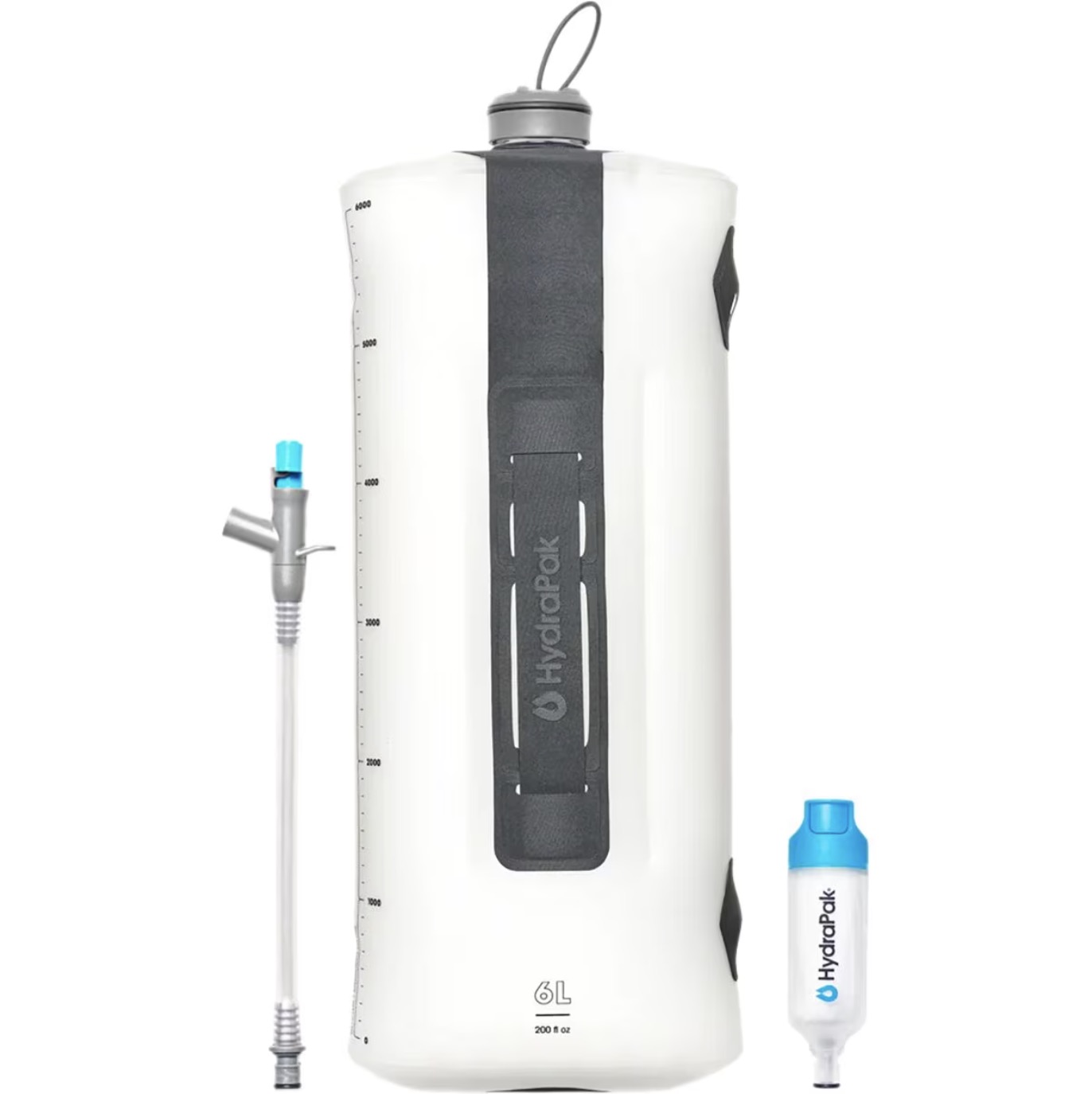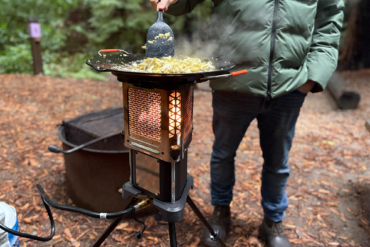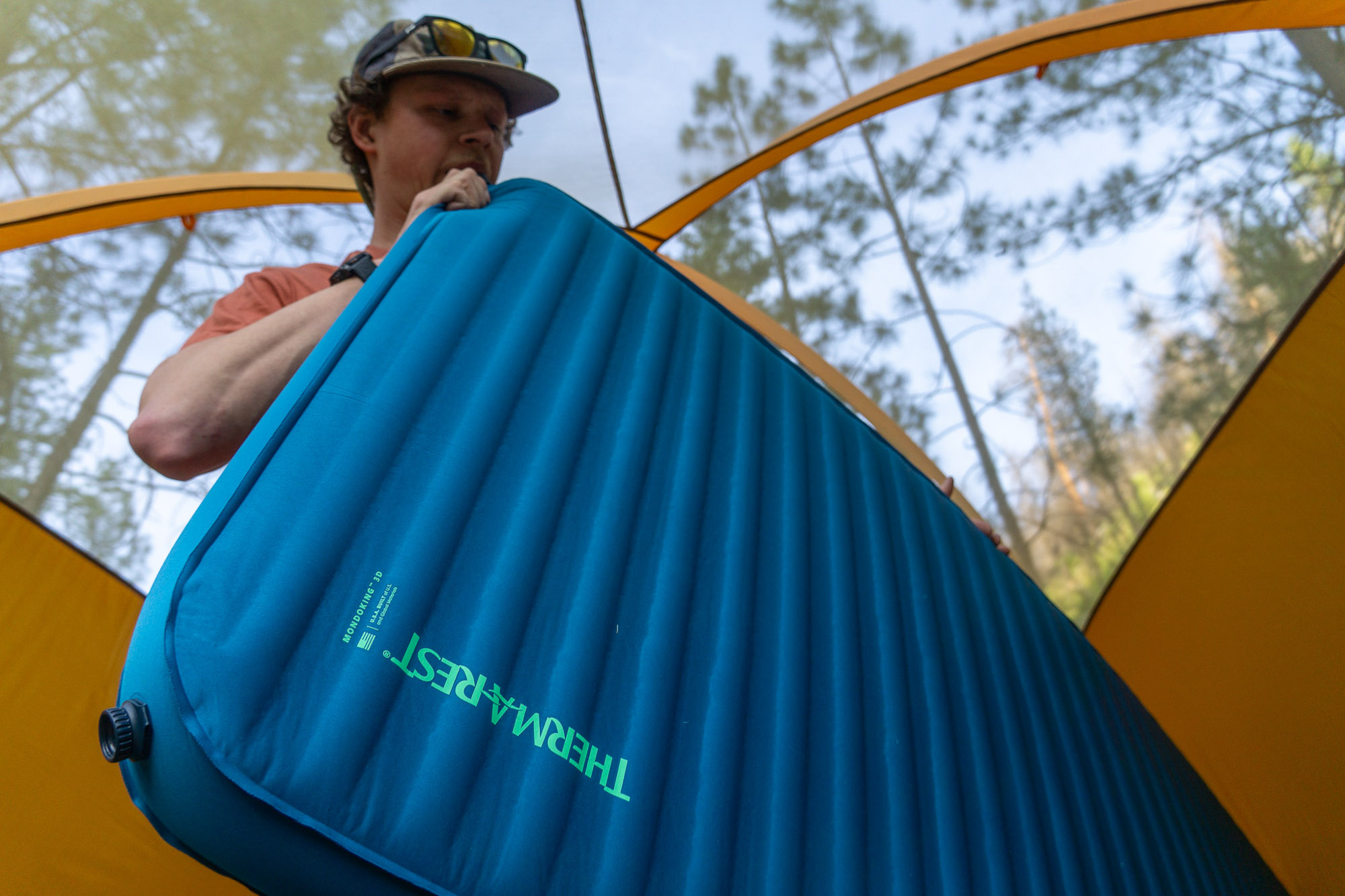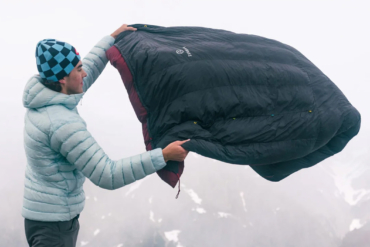By the time our group of nine stumbled through the door of Jackal Hut, most of us had run out of water. The skin up had taken longer than expected — in part, because of the 35- and 40-degree slopes we’d been slogging up. But also in part because of the 50-pound sled full of beer, frozen chili, and camera equipment, we took turns dragging uphill.
But much to our chagrin, the pump had a sticky note duct taped to it: “Cistern empty for the season :(“
There was a palpable deflation among the group. That meant we’d be melting snow for the next 2 days for all of our cooking, toothbrushing, dishwashing, and drinking needs. Which wouldn’t be hard — there were several feet outside the front door. It just wasn’t the freshest snow in the world. Even digging down a few layers under the surface we were finding pine needles, twigs, dirty snow, and other detritus.
Luckily, I’d brought my 6L Seeker HydraPak gravity filter. I’m glad I did. Even after collecting the cleanest-looking snow we could, after melting it and running it through the gravity filter, it was catching a lot of particulates that we would have otherwise surely ingested had boiling been our only method of purification.
And it was an absolute cinch to use, with the awesome hanging loops and handles that HydraPak added. That gravity filter became a staple piece of gear for the rest of our overnight backcountry ski adventures throughout the season. And it’s going to come in handy for group backpacking and camping trips this spring and summer.
In short: HydraPak’s 6L Seeker gravity filtration system is a wonderfully passive way of getting clean water in the backcountry. Whether it’s from snowmelt, a stream or river, or even a lake (if that’s your only choice) this filter makes turning dirty water into filtered water effortless. And the handle and hanging loops make it very easy to hold and hang. I used this gravity filter at multiple backcountry huts this winter and have already tested it once on a spring camping trip in the high country. It is a stellar tool and one I will not be removing from my backpacking pack, except to clean it.
- Technology: Hollow fiber filter; 0.2 micron (0.0002 mm)
- Effect: Removes bacteria, cysts, and sediment
- Filter capacity: Up to 1,500 L
- Filter output: Rate >1 L per minute
- Storage capacity: 6L / 200 fl. oz.
- Weight: 241 g / 8.5 oz.
- Dimensions: 440 mm x 185 mm, 17.3" x 7.3"
- Materials: TPU, POM, ABS, PP, EDPM, 304SS, Hollow Fiber, TPU Coated Nylon Fabric, PVC- & BPA-free
Pros
- Very easy to hold and grip with built in handle
- Passively filters water
- Easy to clean
- Lightweight, compact
Cons
- Backflush adapter requires a separate threaded bottle to properly wash (not included)
- Slow compared to hand-pump or squeeze filters
HydraPak 6L Gravity Filter Review
Why a Gravity Filter?
I’ll be the first to admit, I thought gravity filters were silly before I owned one. I’ve always preferred hand pump filters or squeeze filters like those that Sawyer makes. The gratification is instant; you can do it on the move, as you’re hiking, almost without breaking stride.
But a gravity filter requires time and, well, gravity. You have to hang it somewhere and let the forces of the universe pull the water through the filter, letting it slowly trickle out and into your water bottle. It is an exercise in stoicism.
I never had the patience for all that. I turned my nose up when I saw people busting out gravity filters on backpacking trips.
However, I was wrong. Gravity filters are rad! Especially for campsites, huts, or backcountry picnic areas where you’re spending time in one place. And they’re particularly useful for groups. You just fill the filter up, turn it upside down, hang it somewhere, and open the nozzle. Then you can go about all your other camp duties while gravity does its thing.
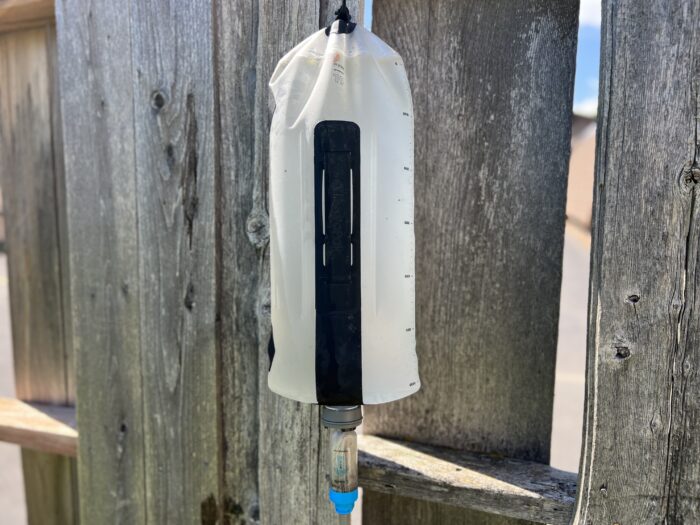
Handles Easily
While filtration performance ultimately matters more than anything, the standout feature of this system rests in its ergonomics. HydraPak designed this gravity filter with a very convenient handle and hanging loops. These make it especially easy to grab and move the filter around, or to hold over your water bottle as it filters.
The handles and loops are welded to the TPU material, so you don’t have to worry about them ripping off or coming undone. The hanging loops are perfectly sized for a ski strap or a small belt to loop through to make hanging easy.

There are a lot of great gravity filters out there — like the Katadyn BeFree, the MSR Guardian, or the Platypus QuickDraw. They all feature a means of hanging the reservoir. But none of them have welded-on handles or hanging loops like the HydraPak Seeker.
It’s one of those design features that makes so much sense that other brands are probably kicking themselves for not thinking of it first. This simple and very handy addition vastly improves the ease of use and functionality of this gravity filter.
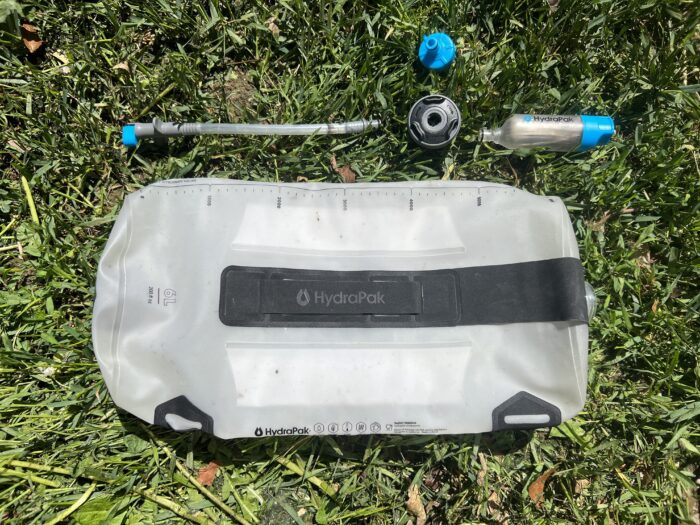
The Inline Filter
HydraPack’s Inline filter uses 0.2-micron hollow fiber filter threads. It’s small, lightweight, and snaps easily into the reservoir’s nozzle. The hose attaches to the other side so that water, transported by gravity, moves through the filter before dripping out of the hose.
According to the brand, the Seeker gravity filter can process 1 L of water per minute. That may be true with a freshly backwashed, unobstructed filter. However, from experience, I can tell you that rate of flow will slow down the more you use it.
I forgot to backflush the filter between our second and third hut trips, and by the end of that weekend, the water was barely dribbling out.
But, good things come to those who wait. Even when the filter was working slowly, it was doing its job and doing it well. HydraPak says that its Inline filter removes 99.9999% of common waterborne bacteria (such as E. coli), paracytic cysts, and microplastics (that are at least 3 microns in size). HydraPak says its Inline filter is good for 1,500 L of water — which comes out to 250 full reservoir fills.
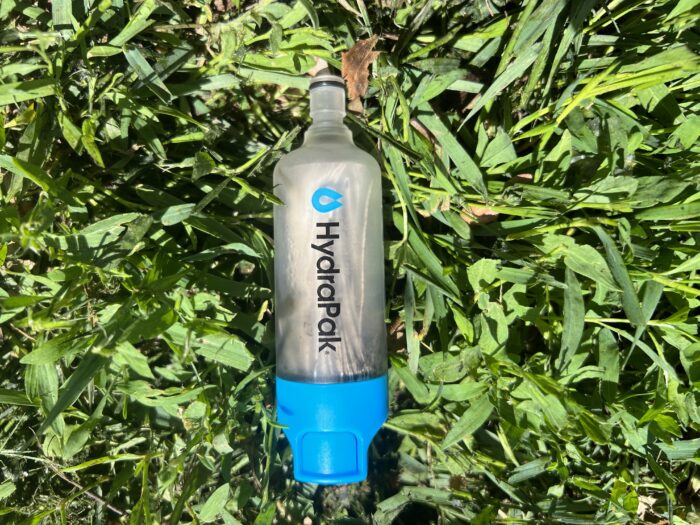
Cleaning the Inline Filter
When it’s time to clean the filter, you’ll know. The otherwise white filter threads will be filled with dark sediment. Basically, if it looks dirty, it probably is.
To clean it, detach both ends from the hose and reservoir and attach it to the backflush adapter. Thread a bottle full of clean water onto that, and squeeze. The water will rush through the Seeker filter (the opposite direction from normal flow) washing out all the nasties it caught.
My only gripe with it? The backflush filter thread doesn’t fit onto the mouth of the reservoir, meaning you have to use a separate (smaller-mouthed) bottle to do the cleaning.
That’s inconvenient. But really, it’s not that big of a deal. And realistically, it probably acts as a safeguard preventing people like me from accidentally using contaminated water to backflush the hollow fiber filter threads.
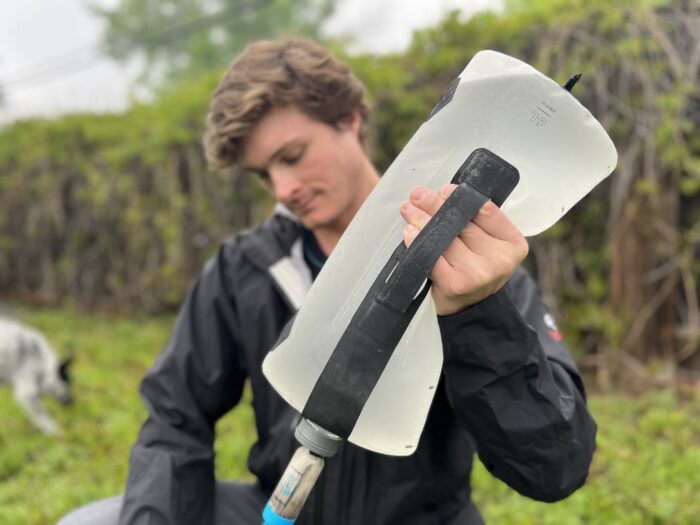
Construction
Made from Thermoplastic Polyurethane (TPU) the actual 6L reservoir of the Seeker proved plenty durable. It was dropped at the huts and hung on awkward makeshift hooks.
On the camping trip where I used it, the Seeker 6L banged around on a tree trunk it was hanging from as multiple people took turns using it for 3 days straight. It got some scuff marks. But it never ripped, tore, or otherwise started leaking on me.
The reservoir is also adequately sized. The average person is supposed to drink a liter of water every hour while they’re doing something active outdoors. And 6 L is enough water that everyone in our hut and camping groups (between six and eight people) were able to use this filter communally without getting in each other’s way. There’s only one rule, and as long as everyone follows it, camp runs smoothly: If you empty the gravity filter, you fill it back up.
And when packed up, the Seeker 6L gravity filter is compact and lightweight. Rolled up in its bag, it’s about the size of a cucumber and only weighs a mere 8.5 ounces.

HydraPak Seeker 6L Gravity Filter: Who’s It For?
Anyone who goes on backpacking trips, overnight backcountry ski trips, camps, or overlands will find this gravity filter a useful item to keep on hand. Even if you carry water in your car, having a means of filtering stream, creek, or river water with, can’t hurt.
Compared to other gravity filters I’ve seen used and used myself, this one is far easier to handle and hang thanks to the handle and loops HydraPak added to it.
The HydraPak Seeker is an especially useful tool for groups, too. Everyone at the huts was extremely grateful to have what essentially functioned as a freshwater tap, on hand. Whip one of these puppies out at a backcountry group campsite or hut and you’re going to make some friends.

